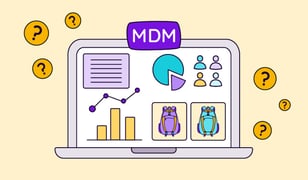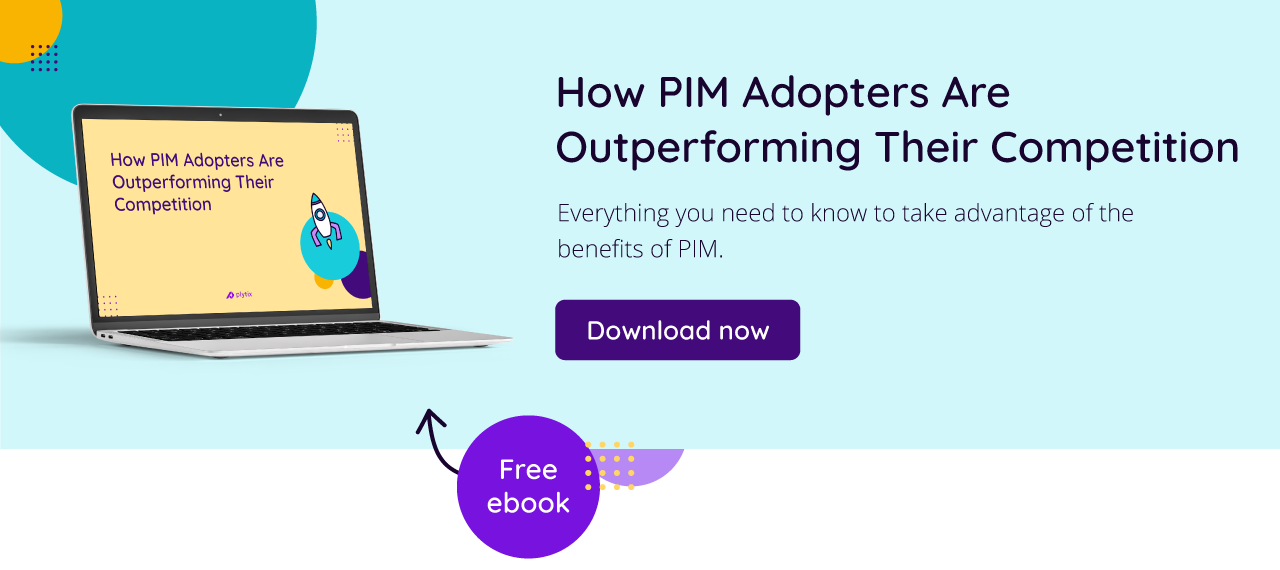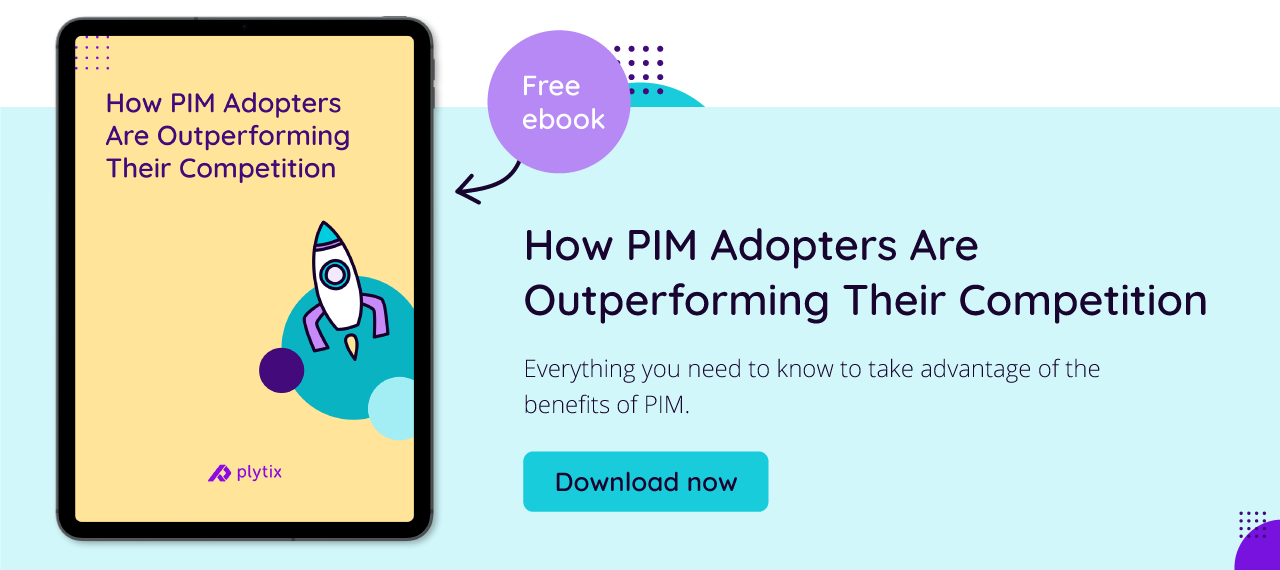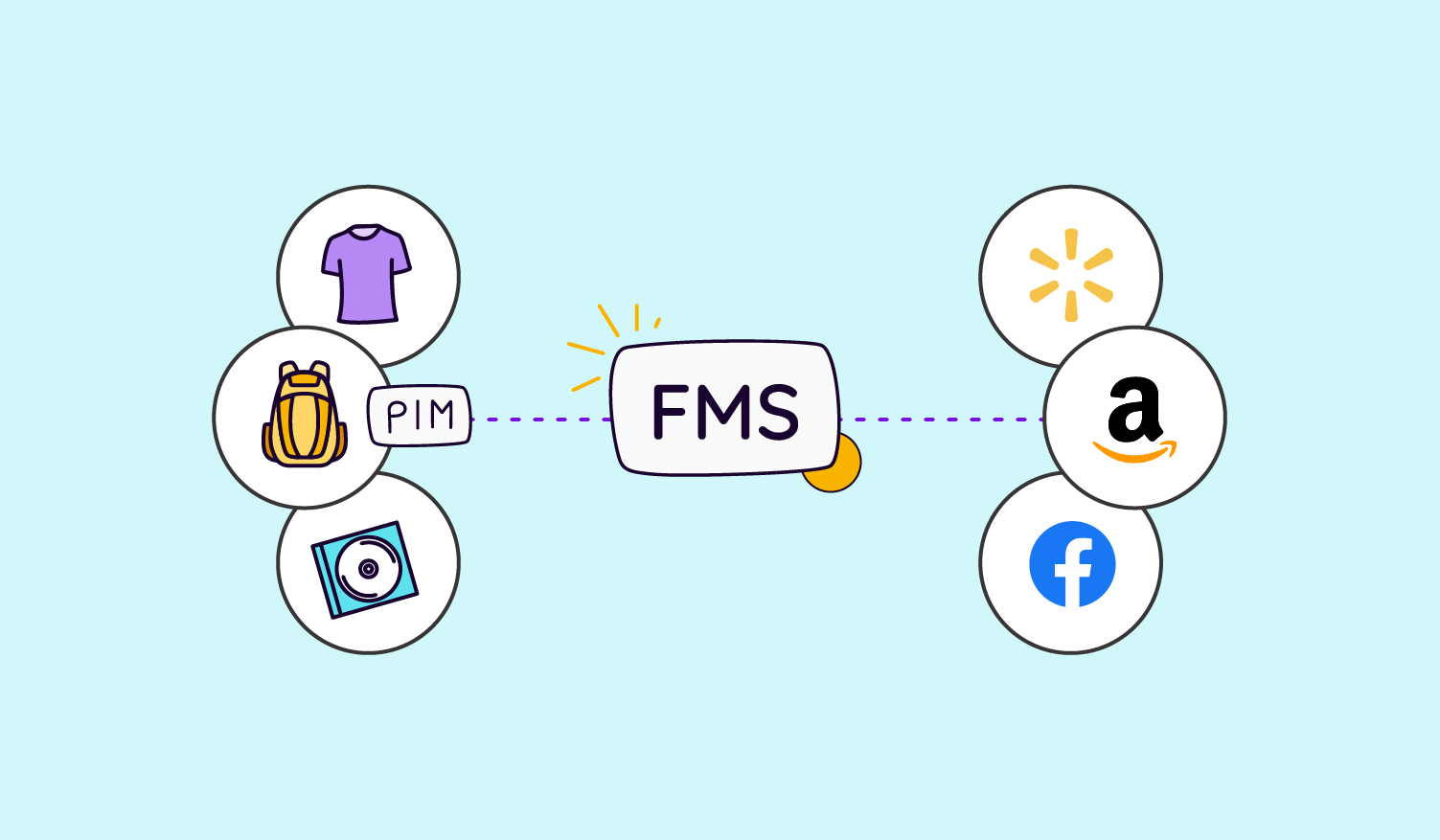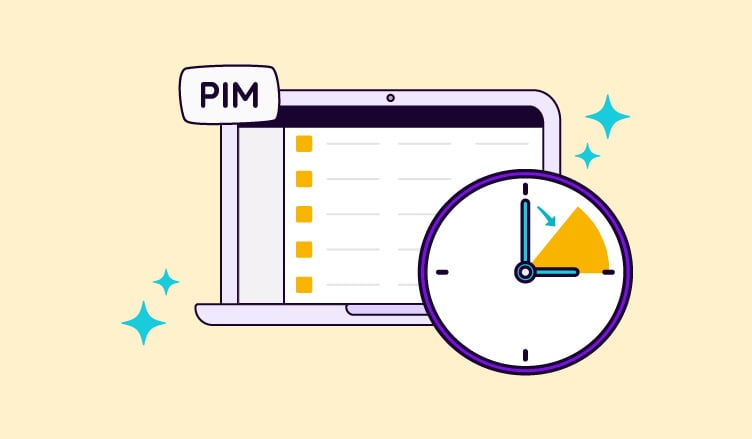Let’s play a game: which of the following acronyms are types of ecommerce tech, and which are styles of electronic music? Hover over the image for the correct answers.
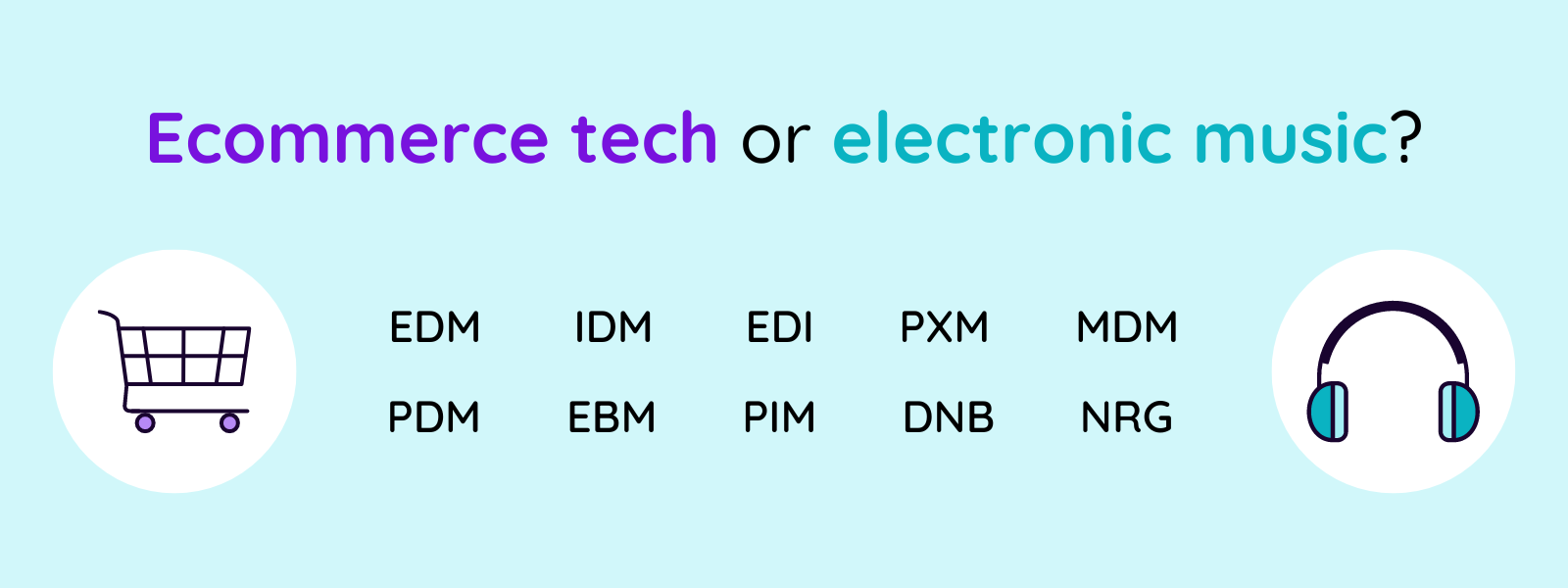
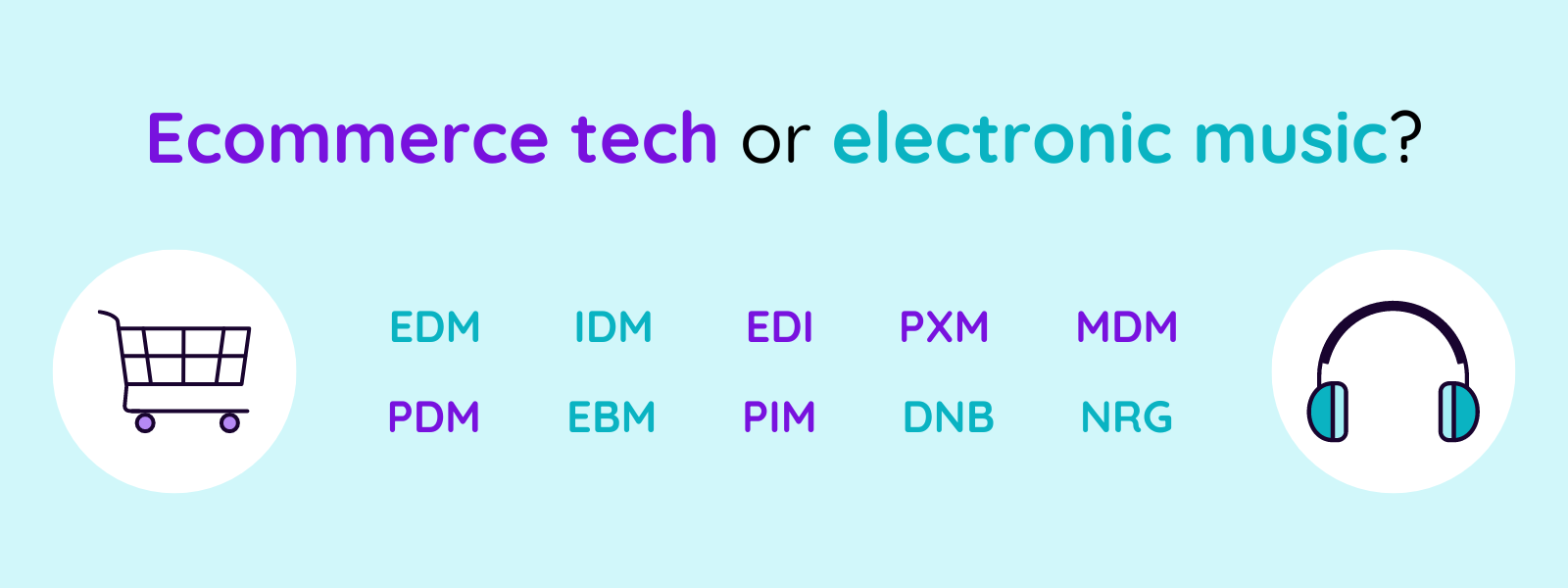
With all the different options out there, it can seem impossible to find the right software for you (and the right style of electronic music, for that matter). It’s not as complicated as it looks though—it just takes a bit of research when you’re getting started.
With that in mind, I’ve put together this guide to help you distinguish between two frequently-confused options: Product Master Data Management (a.k.a. Product MDM or PMDM), and Product Information Management (a.k.a. PIM). We’ll look at the key definition and characteristics of each and then go over when and why each one could be the right choice for you and your business. Ready when you are!
Product MDM: The basics
Product Master Data Management (or just Product MDM from this point on) is a variety of the more general Master Data Management (MDM), just in case that wasn’t clear from the name. MDM is all about connecting all the different parts of your company—so production, marketing, sales, customer support, HR, you name it—and getting everyone to work from one single, well-defined version of all the important data in an organization, also called a “golden record.” For more information about how MDM software compares to PIM software, by the way, you can watch this handy video guide:
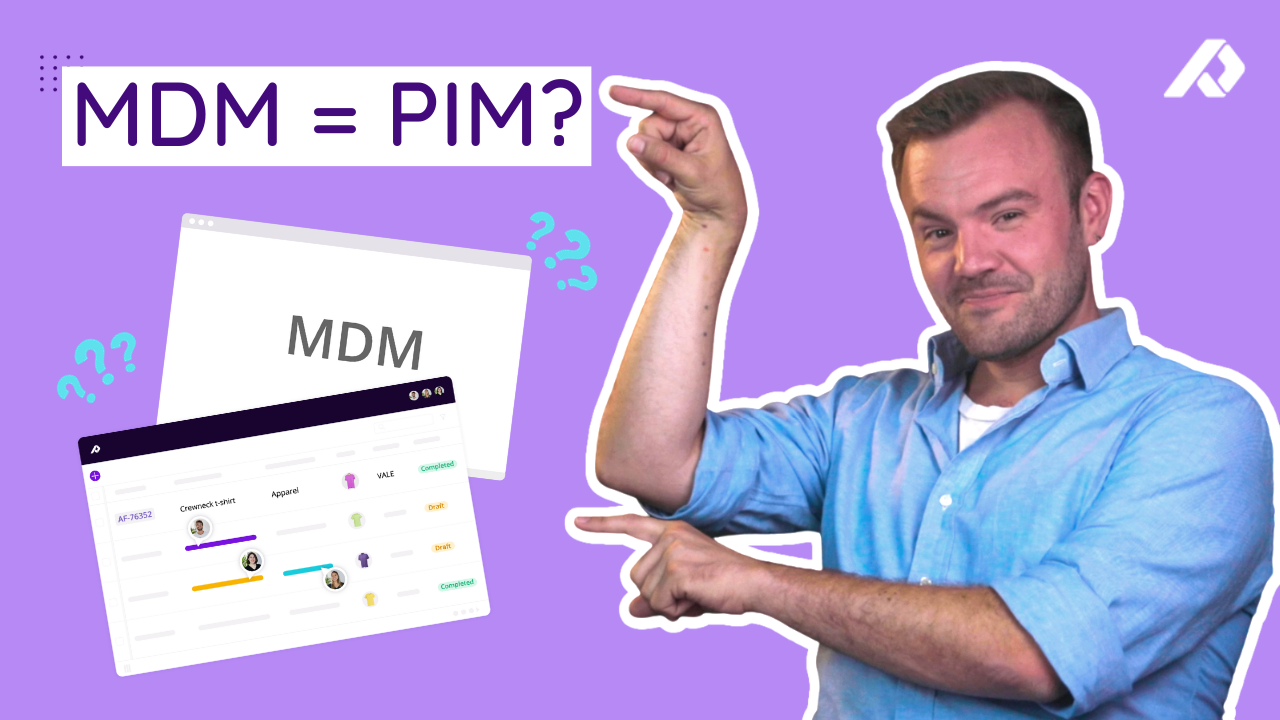
Product MDM, then, is the side of MDM related to your products (logically enough). It means creating a central library of your company's product data, in which you meticulously organize and store detailed information about every aspect of your products. This detailed cataloging covers a range of different data, including categories, prices, product numbers, manufacturing information, stock levels, and sales statistics for each item in your company's product line.
Product MDM is a pretty important practice for a company's infrastructure since it basically comes down to managing product data in an efficient, logical way. By making sure every product is accurately represented with all the necessary data points, Product MDM lets you maintain the integrity of your company's product portfolio. The data governance involved can prevent things like overlapping categories or mislabeling, and it plays a vital role in detecting and eliminating duplicate data too. Having unique and precise product information is crucial in a market where even minor discrepancies can lead to significant consequences (in other words: selling less stuff, making less money, and general misery and woe all around).
Behold the majesty of accurate product information! No flash photography, please.
Key characteristics of Product MDM software
The practice of Product MDM comes with a symphony of complex, critical challenges, since it involves managing a massive library with thousands of attributes, relationships, and records, all spread across different platforms and systems. Trying to keep track of everything with traditional methods (*cough* like spreadsheets *cough*) is like trying to play techno on a harpsichord—you just won’t be able to keep up with the up-tempo beat of modern product data.
For that reason, software solutions designed to help with PMDM should offer a selection of key features—here are five of our top picks:
- Data consolidation: Product MDM gets data from various sources into one place, in one unified format.
- Data cleansing: This feature fine-tunes the data, removing any discordant points or errors and making sure only the highest quality information is used.
- Data governance: Product MDM provides a set of rules and standards to provide data integrity and consistency, and guarantee that future data inputs will match what’s already in the system.
- Data sharing: It facilitates the smooth flow of information across different departments, from production and design through to post-sales care.
- Security: Like an artist keeping their master recording in a high-tech safe, Product MDM guarantees the safety and security of your data.
Moreover, Product MDM software is an analytically driven application, and normally provides interactive and customizable dashboards to give you a convenient way to oversee your data (and remix it as necessary). Tools like this can help you prioritize tasks and make informed decisions, based on real-time information.
 Or to put it another way, she would benefit from MDM software.
Or to put it another way, she would benefit from MDM software.
PIM: The essentials
Product Information Management (PIM) is another headliner at our ecommerce technology/music festival (don’t knock it till you’ve tried it, some of us are still wearing our wristbands from last year). While Product MDM can give you an overview of all the different types of product-related data, including production and post-sales data, PIM has a more specialized, in-depth focus. It's primarily concerned with managing and optimizing the product information essential for effective marketing and selling products through various distribution channels.
At its core, PIM is about helping you get all your product information accurate, up-to-date, and tailored for the specific requirements of different sales and marketing platforms. This includes everything from the basic product details like names, descriptions, and prices, to more nuanced data like multimedia files, specifications, customer reviews, and even localized content for different regions.
By focusing on this area of product data in particular, software that’s specifically designed for PIM is able to offer more advanced features in this regard than the more general option of (Product) MDM software. PIM tools are designed to make your selling process as smooth as possible, from start to finish, and to integrate easily with other platforms and systems related to ecommerce and product-related information. There are also functions to enrich all this data and content, which can end up massively boosting sales and improving your customer experience—but more on that later.

Don't worry, confused purple shirt man, there's more info on the way!
Key characteristics of PIM software
On that note (pun 100% intended), let's shine a spotlight on those key features that make PIM software a must-see act on the ecommerce stage.
- Content management: PIM software allows you to seamlessly combine text, images, and videos to produce a symphony of engaging product content, and often includes specialized Digital Asset Management features to help you manage and adapt your content for different purposes.
- Channel-specific customization: Similarly, PIM also means you can tailor your product information for different types of sales channel—be it your ecommerce website, a third-party retailer, or a social media platform—by using advanced functions to handle your data attributes efficiently.
- Localization: Localization in PIM is all about the adaptation of product information to different languages and cultural contexts. This is crucial for global businesses (or businesses hoping to go global in the future).
- Workflow management: Quality PIM systems include tools for managing the workflow of product information, from creation and editing to approval and publication. These tools let you easily monitor your team’s progress at any point and quickly see the completeness of your product information.
- Integration capabilities: A good PIM system can integrate seamlessly with other systems like ERP and CRM, keeping all your systems updated with the latest product information. PIM software also provides different ways to connect your tech stack with external ecommerce platforms as easily as possible.
PIM and its associated software give creative direction to your product information, providing you with the tools to tell each product's story in the most compelling way possible. It's not just about managing data, it's about crafting experiences, engaging customers, and building a brand narrative that resonates across all channels. With PIM, your products don't just exist in the market—they sing (and in tune, too).
Product MDM vs PIM software
Both Product MDM and PIM are instrumental (I’ll stop with the music puns soon, honest) in the world of modern ecommerce, with each serving distinct but vital roles. The choice between them can be a complicated one, and it often reflects the unique priorities, situations, and operational contexts of each individual business.
Benefits of Product MDM
Product MDM is often considered the backbone of data integrity, offering a centralized approach that lets you manage and synchronize product data across your whole organization. Software in the MDM sector is particularly beneficial for larger enterprises with super complex product ranges and loads of diverse departments, upholding uniformity and accuracy of information throughout the company.
Benefits of PIM software
PIM software, on the other hand, has been developed extensively to help deal with the demands of modern digital commerce. Its capabilities go beyond just managing your data, and include specialized aspects that are crucial for contemporary marketing and sales.
- Adaptability and speed: The landscape of online retail is changing all the time, what with AI, AR, and all the other astonishing apps appearing. The responsive nature of PIM is a lifesaver when it comes to updating and distributing product information and allows businesses to stay one step ahead.
- Rich content management: The digital marketplace demands engaging and detailed product presentations (that is, if you want to actually sell your products 😅). PIM seamlessly integrates rich content and digital assets without breaking a sweat, which then boosts the appeal and comprehensiveness of product descriptions.
- Customization for diverse channels: Diversity and personalization are essential for companies looking to up their ecommerce game, and luckily enough, one of PIM's strengths is its ability to tailor product information for a wide range of sales and marketing channels.
PIM software = a stellar option for your business.
Which one should I choose?
Ultimately, it comes down to your business and its needs, as well as the other systems that you already have in place. PIM software goes above and beyond when it comes to getting your product information out into the world in the most appealing way possible, but isn’t designed for inventory or product design-related information—you’re better off linking it to something like an ERP system for that. Product MDM software, on the other hand, is able to handle that kind of data, but generally lacks features to help you populate your product listings with sales-boosting content.
Product MDM and PIM software
Given their different strengths, you may well be thinking “Well hey, why don’t I just get both?”. It’s not a bad idea, but naturally, doubling up on software will increase the investment and effort involved as well. Since there is a degree of overlap between the two, the majority of companies do tend to just use one or the other, and it’s really only enterprise-level businesses that go for both. Still, if you’ve got the resources available and the need, then sure—why not both?

Miguel and Tulio both love ecommerce software.
Final recommendations
To wrap things up, it's pretty clear that the symphony of ecommerce technology, though clearly complex, doesn’t have to be overwhelming. The key is to understand the unique attributes and strengths of both Product MDM and PIM systems. The first can help share data between all the different stages of a product’s lifecycle, which helps guarantee data integrity across your organization. The second, on the other hand, gives you a way to take your data and transform it into captivating, market-ready content that can be shared with the wider world. The decision between the two hinges on your business's specific needs, scale, and ambitions in the digital marketplace we all share.
For those eager to stay ahead of the curve, understanding how adopters of these technologies are putting on the best performance in the industry can provide invaluable insights. Dive deeper into the world of Product Information Management with our comprehensive guide, which really gets into how PIM adopters are not just meeting but beating their competition—it’s a great way to make sure your business is hitting all the right notes in your ecommerce concert (ecomcert? No? Okay, now I’ll actually stop).
Frequently Asked Questions
Product Master Data Management (MDM) refers to a method of managing all of your company’s critical product data in a single, consistent, and centralized system. It makes sure that everyone across the organization—be it in production, sales, marketing, or customer service—has access to and operates based on the same, accurate product information.
- Improved data quality and consistency across the organization.
- Reduced data errors and elimination of duplicate entries.
- Enhanced operational efficiency by providing a single source of truth for product data.
- Better compliance and risk management through standardized and controlled data management processes.
Product MDM is focused on centralizing, organizing, and managing all critical product data across the entire organization to ensure consistency and accuracy. It encompasses a wide range of internal data points relevant to different departments. In contrast, Product Information Management (PIM) is more focused on managing product information specifically for marketing and selling products through various distribution channels. PIM concentrates on the management and optimization of data related to product marketing and sales, including data enrichment, localization, and customization for different marketplaces.
The benefits of PIM include:
- Streamlined management of product information, making it easier to update and maintain accurate product details.
- Greater ability to customize and localize product information for different markets and sales channels.
- Improved customer experience through the provision of detailed, accurate, and appealing product information.
- Increased efficiency in marketing and sales operations, as product information is easily accessible and tailored to specific channel requirements.

